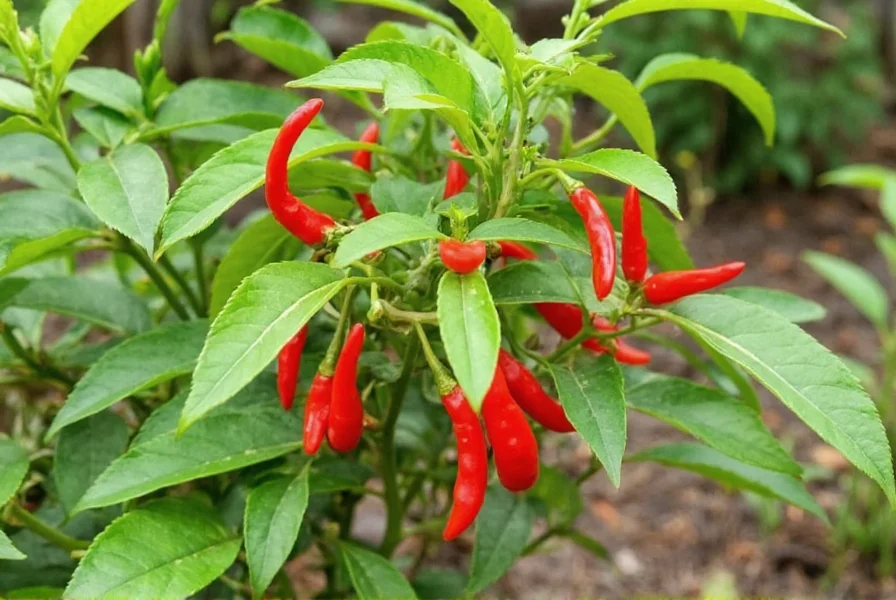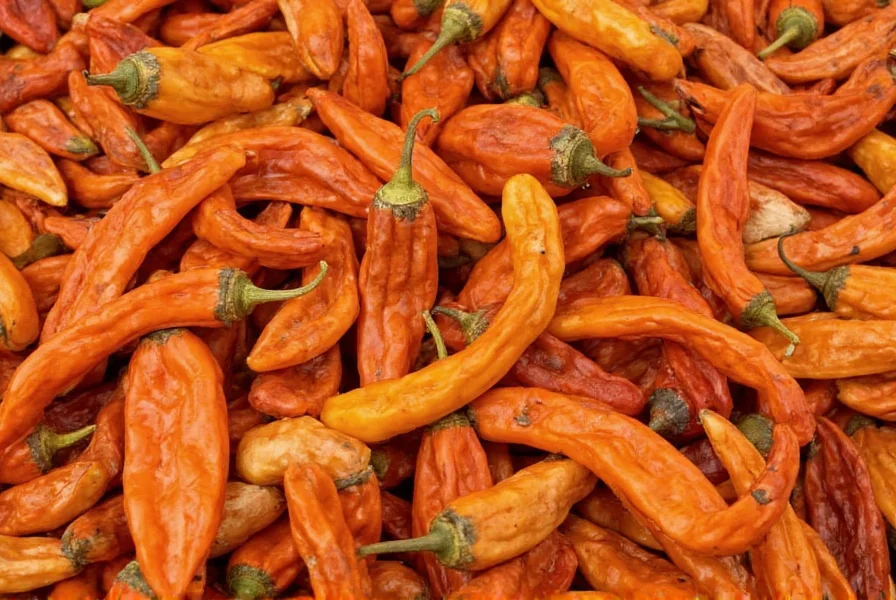The Flying Dragon pepper, scientifically classified as Capsicum annuum 'Flying Dragon,' has gained popularity among home gardeners and chili enthusiasts for its striking appearance and practical culinary applications. Unlike many purely ornamental pepper varieties, this cultivar offers both visual interest and usable heat, making it a valuable addition to gardens and kitchens alike.
Understanding the Flying Dragon Pepper Variety
Despite its somewhat fantastical name, the Flying Dragon pepper is a very real and increasingly common cultivar in the chili pepper family. The "flying" descriptor comes from the distinctive curved shape of its pods, which resemble mythical dragons in flight when viewed from certain angles. This visual characteristic makes it particularly popular as an ornamental plant, though its culinary properties shouldn't be overlooked.
Physical Characteristics and Heat Profile
Flying Dragon peppers typically measure 2-3 inches in length with a curved, twisted shape that sets them apart from more conventional chili varieties. They begin as green pods before maturing to a vibrant red color. The plants themselves grow to about 18-24 inches in height, making them suitable for container gardening as well as traditional garden beds.
| Characteristic | Details |
|---|---|
| Scientific Name | Capsicum annuum 'Flying Dragon' |
| Scoville Heat Units | 30,000-50,000 SHU |
| Plant Height | 18-24 inches |
| Pod Length | 2-3 inches |
| Maturation Time | 70-80 days from transplant |
When evaluating the heat level of flying dragon peppers for culinary use, it's important to understand that they fall in the medium-hot category. For reference, they're significantly hotter than jalapeños (2,500-8,000 SHU) but milder than habaneros (100,000-350,000 SHU). This makes them versatile for various cooking applications where noticeable heat is desired without overwhelming spiciness.
Growing Flying Dragon Peppers Successfully
Cultivating flying dragon peppers requires attention to specific growing conditions to ensure optimal development of their characteristic curved pods and heat profile. These peppers thrive in warm climates with plenty of sunlight, though they adapt well to container gardening in cooler regions.
For gardeners interested in growing flying dragon chili peppers, start seeds indoors 8-10 weeks before the last expected frost. Maintain soil temperatures between 70-85°F (21-29°C) for optimal germination. Once seedlings develop their second set of true leaves, transplant them into individual pots before moving outdoors after all danger of frost has passed.
When selecting the best soil for flying dragon peppers, choose a well-draining mix with a pH between 6.0 and 6.8. These plants benefit from regular feeding with a balanced fertilizer, particularly during flowering and fruit set. Consistent watering is crucial—allowing the soil to dry out completely can cause blossom drop, while overwatering leads to root rot.

Culinary Applications of Flying Dragon Peppers
The flavor profile of flying dragon peppers makes them suitable for various culinary applications. They offer a bright, slightly fruity flavor with moderate heat that builds gradually rather than hitting immediately. This characteristic makes them more versatile in cooking than some instantly fiery peppers.
When incorporating flying dragon peppers into recipes, consider these applications:
- Add sliced peppers to stir-fries during the last few minutes of cooking
- Use in salsas where moderate heat is desired without overwhelming other flavors
- Stuff with cheese or other fillings for an attractive and flavorful presentation
- Dry and crush for homemade chili flakes with distinctive visual appeal
- Pickle whole for a decorative and tasty condiment
For those seeking flying dragon pepper substitutes, consider Hungarian wax peppers or serranos, which offer similar heat levels though without the distinctive curved shape. The visual uniqueness of flying dragon peppers makes them difficult to replace when appearance matters as much as flavor.
Harvesting and Preservation Techniques
Harvest flying dragon peppers when they've fully matured to their vibrant red color for maximum heat and flavor. However, they can be harvested green if a milder flavor is preferred. Use clean scissors or pruning shears to cut the peppers from the plant, leaving a small stem attached to prevent damage to the plant.
Preserving flying dragon peppers extends their usability throughout the year. Effective preservation methods include:
- Drying: String peppers on twine and hang in a warm, dry location
- Freezing: Place whole or sliced peppers in freezer bags
- Pickling: Create flavorful pickled peppers for condiments
- Oil preservation: Store in olive oil with garlic for cooking

Common Growing Challenges and Solutions
Gardeners growing flying dragon peppers may encounter several common issues. Blossom end rot, caused by calcium deficiency, appears as dark, sunken spots on the blossom end of peppers. Prevent this by maintaining consistent soil moisture and ensuring adequate calcium in the soil.
Pests like aphids and spider mites can also affect flying dragon pepper plants. Regular inspection and treatment with insecticidal soap or neem oil can control these pests without harming beneficial insects. For organic gardeners seeking natural pest control for flying dragon peppers, introducing ladybugs or planting companion plants like basil can help manage pest populations.
Where to Find Flying Dragon Pepper Seeds or Plants
Flying Dragon pepper seeds are widely available from specialty seed companies, both online and in garden centers. When searching for flying dragon pepper seeds, look for reputable suppliers that provide germination rates and growing information. Many seed catalogs now specifically highlight this variety due to its ornamental appeal and culinary versatility.
For those wondering where to buy flying dragon peppers fresh, check local farmers' markets during peak growing season or specialty grocery stores that carry heirloom and unusual produce varieties. Some online retailers also offer fresh peppers during harvest season.
Frequently Asked Questions
What is the difference between flying dragon peppers and regular chili peppers?
Flying Dragon peppers are a specific cultivar of Capsicum annuum distinguished by their distinctive curved, twisted shape that resembles flying dragons. While regular chili peppers come in various shapes and sizes, Flying Dragons have a unique appearance that makes them particularly ornamental. Their heat level (30,000-50,000 SHU) places them in the medium-hot category, hotter than jalapeños but milder than habaneros.
How long does it take for flying dragon peppers to mature?
Flying Dragon peppers typically take 70-80 days from transplant to reach full maturity when growing conditions are optimal. They begin as green pods and gradually transition to vibrant red as they mature. The distinctive curved shape develops as the peppers grow, with the most dramatic curves appearing as they approach full ripeness.
Can flying dragon peppers be grown indoors successfully?
Yes, flying dragon peppers can be successfully grown indoors with proper lighting and care. They require at least 6-8 hours of direct sunlight or equivalent artificial lighting. Use a container at least 12 inches in diameter with good drainage, and maintain consistent moisture without waterlogging the soil. Indoor plants may need manual pollination to produce fruit, which can be done by gently shaking the plant or using a small brush to transfer pollen between flowers.
Are flying dragon peppers safe to eat when they're still green?
Yes, flying dragon peppers are safe to eat when green, though they'll have a slightly different flavor profile than when fully ripe. Green peppers tend to be milder and more vegetal in flavor, while red, mature peppers develop more complex sweetness along with their characteristic heat. The heat level increases as the peppers mature, so green flying dragons will be somewhat milder than their fully red counterparts.
What are the best companion plants for growing flying dragon peppers?
Excellent companion plants for flying dragon peppers include basil, which repels pests and enhances flavor; onions and garlic, which deter many common garden pests; and marigolds, which help prevent nematode problems. Avoid planting peppers near fennel or kohlrabi, which can inhibit their growth. Beans and peas can also be beneficial companions as they fix nitrogen in the soil, though they should be planted with adequate spacing to prevent overcrowding.











 浙公网安备
33010002000092号
浙公网安备
33010002000092号 浙B2-20120091-4
浙B2-20120091-4